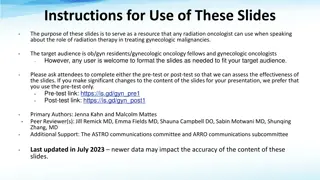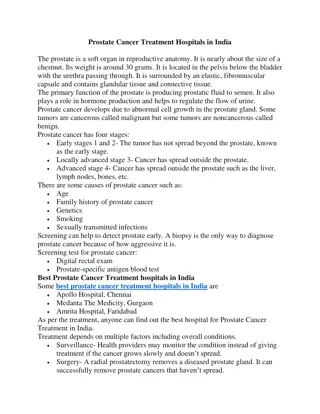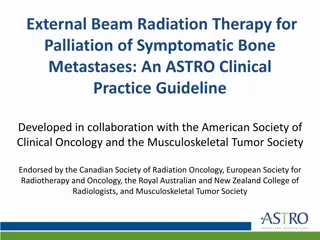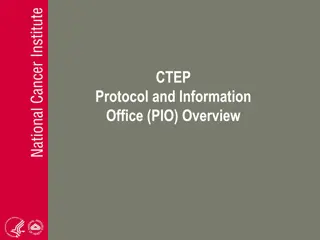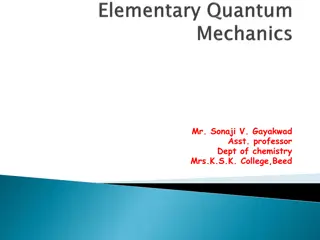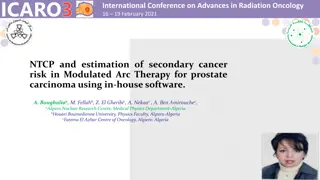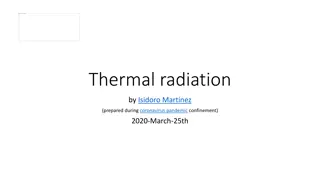Innovative Approaches in Radiation Therapy for Prostate Cancer
Ronald Chen, MD MPH discusses reducing radiation treatment time and the effectiveness and safety of different fractionation schedules in prostate cancer treatment. Various hypofractionation regimens are explored, with moderate hypofractionation showing promising results in clinical trials for different risk levels of prostate cancer.
Download Presentation

Please find below an Image/Link to download the presentation.
The content on the website is provided AS IS for your information and personal use only. It may not be sold, licensed, or shared on other websites without obtaining consent from the author.If you encounter any issues during the download, it is possible that the publisher has removed the file from their server.
You are allowed to download the files provided on this website for personal or commercial use, subject to the condition that they are used lawfully. All files are the property of their respective owners.
The content on the website is provided AS IS for your information and personal use only. It may not be sold, licensed, or shared on other websites without obtaining consent from the author.
E N D
Presentation Transcript
Radiation Therapy for Prostate Cancer Ronald Chen, MD MPH Associate Professor, Radiation Oncology University of North Carolina Chapel Hill Associate Director, UNC Lineberger Comprehensive Cancer Center NASPCC 10-13-18
Disclosures Accuray Inc: consulting and research funding Bayer: consulting
Outline 1) Shortening radiation treatment for prostate cancer 2) Oligometastatic prostate cancer
Definitions Daily Dose (Gy) Number of Treatments Total Dose (Gy) Duration (Weeks) Conventional 1.8-2 38-45 75-81 8-9 Moderate Hypofractionation 2.4-3.4 15-30 57-70 3-6 Extreme Hypofractionation 7-10 4-5 35-50 1-2
Concern is this effective? Daily Dose (Gy) Number of Treatments Total Dose (Gy) Duration (Weeks) Conventional 1.8-2 38-45 75-81 8-9 Moderate Hypofractionation 2.4-3.4 15-30 57-70 3-6 Extreme Hypofractionation 7-10 4-5 35-50 1-2
Concern is this safe? Daily Dose (Gy) Number of Treatments Total Dose (Gy) Duration (Weeks) Conventional 1.8-2 38-45 75-81 8-9 Moderate Hypofractionation 2.4-3.4 15-30 57-70 3-6 Extreme Hypofractionation 7-10 4-5 35-50 1-2
Moderate Hypofractionation N Daily Dose 2 # Total Dose 80 Daily Dose 3.1 # Total Dose 62 Doses 40 Doses 20 Italy 168 MDACC 204 1.8 42 75.6 2.4 30 72 Australia 217 2 32 64 2.75 20 55 Fox Chase 303 2 38 76 2.7 26 70.2 HYPRO 804 2 39 78 3.4 19 64.6 Lukka 936 2 33 66 2.62 20 52.5 RTOG 1092 1.8 41 73.8 2.5 24 60 PROFIT 1206 2 39 78 3 20 60 CHHiP 3216 2 37 74 3 20 60
Moderate Hypofractionation 9 clinical trials Low risk prostate cancer to high risk cancer Hypofractionation No increase in recurrence Similar side effects Benefits to patients: Patient convenience Equally effective and cheaper cost = more cost- effective
Extreme Hypofractionation Reducing radiation treatment to only 1-2 weeks Cyberknife is a branded machine that is often used
Extreme Hypofractionation Largest reported study to date: Pooled analysis of patients from 8 institutions (UCLA, Harvard/Beth-Israel, Italy, Georgetown, Swedish Medical Center/Seattle, etc) N=1100, enrolled 2003-2011 35-40 Gy/4-5 fractions King CR et al. Radiat Oncol 109:217-221, 2013.
Efficacy 5-year relapse free survival Low risk (N=641): 95% Intermediate (N=334): 84% High (N=125): 81%
Efficacy N=477, low or intermediate risk 7-7.25 Gy/fraction x 5 = 35-36.25 Gy total Katz AJ et al. Frontier Oncol 4:article 240, 2014.
Efficacy Median PSA at 7 years: 0.11
Quality of Life Prospectively collected using EPIC Urinary Bowel Sexual (14% ADT) Katz AJ et al. Frontier Oncol 4:article 301, 2014.
Randomized Trial Intermediate/high risk prostate cancer 2 Gy x 39 = 78 Gy 6.1Gy x 7 = 42.7 Gy N=1180 patients 5-year free from recurrence: 84% vs 84% No difference in toxicity Widmark A et al. ESTRO 2018.
Conclusions Daily Dose (Gy) Number of Treatments Total Dose (Gy) Duration (Weeks) Conventional 1.8-2 38-45 75-81 8-9 Moderate Hypofractionation 2.4-3.4 15-30 57-70 3-6 Extreme Hypofractionation 7-10 4-5 35-50 1-2
TREATMENT FOR OLIGOMETASTATIC PROSTATE CANCER
Oligometastatic Cancer Cancer that has metastasized to only a few places Currently, standard treatment is ADT Can aggressive treatment help some patients? Is this potentially curable?
STOMP Trial 62 patients with prostate cancer recurrence 3 metastases Randomize: Observation Surgery or stereotactic body RT to all metastases Ost P et al. JCO 36(5):446-53, 2018.
Results Time to starting ADT Obs: 13 months Treatment: 21 months
Conclusion Targeted (surgery or SBRT) to all metastases for patients with oligometastatic prostate cancer is Well tolerated Delays the need for ADT which may be beneficial to patients
Other Ongoing Trials Patient with newly diagnosed metastatic prostate cancer Few areas of metastasis Treat all the areas of disease (prostate and metastases) does that help improve patient outcomes?



